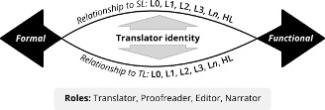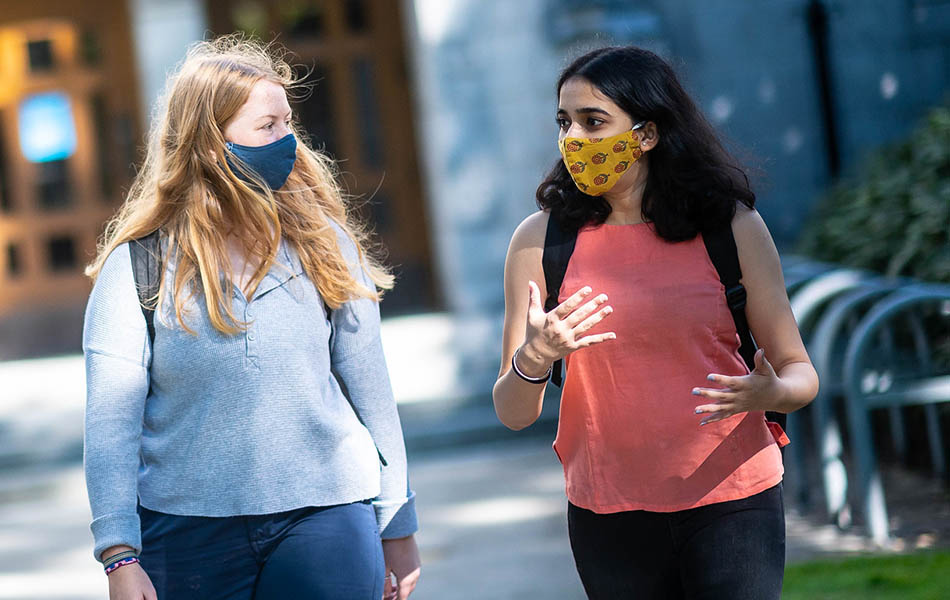Welcome to the second instalment of Pithy Papers, where we highlight important and interesting research in the last three months by members from our three research themes, in 150 words or fewer.
Find out how gesture influences communication, why it's important that adult porcine cochlea have been shown to have regenerative capacity, and how translators navigate their identities.

Gesture influences resolution of ambiguous statements of neutral and moral preferences
Dr. Jennifer Hinnell, Department of English Language & Literatures
What's new in this paper?
We explore whether listeners rely on gesture to understand a speaker’s opinion even when that gesture reinforces an unlikely stance. It turns out they do! This shows that gesture is highly influential, strong enough to counter the likelihood of a morally objectionable position.
Why is it important?
We can all observe that gestures (and other body movements) are doing something meaningful in face-to-face communication. Understanding more about what these are doing in our interactions gives us a window into how people process language.
Who should read it?
At times we all have strong opinions! It’s important to be clear in how we’re asserting them. Anyone interested in how we communicate might be interested and I hope that people interested in language and cognition will appreciate it at a more technical level.

Adult porcine (Sus scrofa) derived inner ear cells possessing multipotent stem/progenitor cell characteristics in in vitro cultures
Associate Professor Desmond Nunez, Department of Surgery
What's new in this paper?
We found scanning electron microscopy, fluorescence immunocytochemistry and quantitative reverse transcription polymerase chain reaction evidence of stem/progenitor cell characteristics in cells harvested from adult porcine cochleae, and cultured in Dulbecco’s Modified Eagle Medium enriched with 10% Fetal Bovine Serum (FBS) growth medium at 37oC in 5% CO2.
Why is it important?
Hearing loss is the second leading cause of impairment among humans globally, as defined by the GBD study. Sensory cell death is the pathological correlate of sensorineural hearing loss, the predominant cause of permanent hearing loss. Previous research suggests complex protocols are required to achieve human cochlear sensory cell replication.
Who should read it?
The paper will be of interest to those interested in models for studying inner ear hearing loss and potential treatments.
Bonus question! What does it mean for language research?
The adult porcine cochlea hasn’t previously been shown to have regenerative capacity which suggests that the experimental techniques described here have resulted in this finding. Further work is required to determine if there are pre-existing stem cell rests within the porcine inner ear or if our techniques triggered cellular transformation.

Translation, identity, and translanguaging: Perspectives from a global literacy initiative [forthcoming]
Liam Doherty, Professor Bonny Norton, and Associate Professor Espen Stranger-Johannessen, Department of Language & Literacy Education (UBC) and Centre for Studies of Educational Practice (Inland Norway University of Applied Sciences)

What's new in this paper?
A new model of translator identity, building on Afreen (2017). When navigating their identities, translators move along multiple axes: horizontal, between orientations to the text itself, and vertical, between their relationship to the source (SL) and target (TL) languages, as well as among roles in the translation process.
Why is it important?
By explicitly acknowledging the range of linguistic repertoires and roles associated with translation, we hope to legitimize the otherwise invisible work done by many translators at the periphery, and within the interstices of monolithic ‘native speaker’ translation as traditionally theorized and operationalized.
Who should read it?
Language scholars who are interested in multilingualism, translation, identity, second language learning, literacy, dual language texts, culture, open technology, the Global Storybooks project.
Join the conversation on Twitter (@UBCLangScis) and ask our members about their work!
Main image credit: Paul H. Joseph / UBC Brand & Marketing
